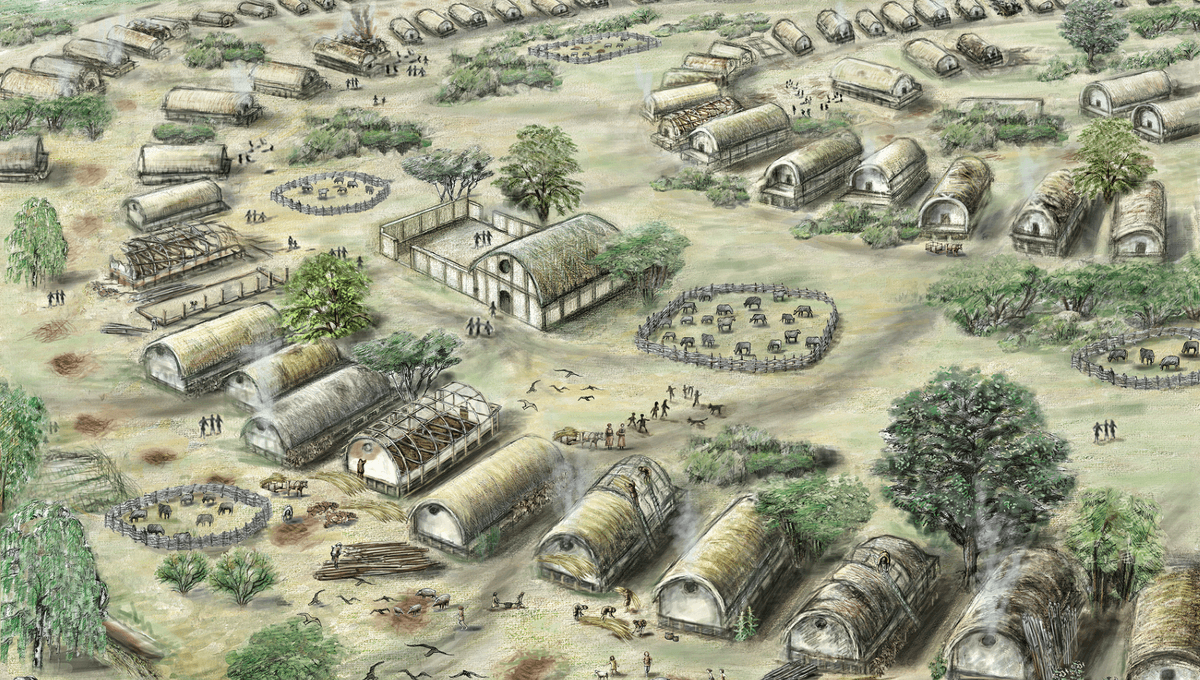
The inhabitants of the earliest human megasites got most of their protein from peas rather than meat, new research has revealed. Located in modern-day Ukraine and Moldova, the rural towns of the ancient Trypillia culture were founded more than 6,000 years ago and contained around 15,000 residents, making them the largest known prehistoric settlements in the world.
From around 4100 BCE, Trypillia sites of around 320 hectares (790 acres) began to appear on the forest-steppe area northwest of the Black Sea. To understand how these massive communities subsisted, the study authors analyzed stable carbon and nitrogen isotopes from more than 480 human and animal bones, as well as charred crops and soil, collected from 40 different sites.
This enabled the researchers to reconstruct the Trypillian diet while also learning about how livestock was raised and crops were grown. “The food web models indicate a low proportion of meat in human diet (approximately 10 percent),” report the study authors. “The largely crop-based diet, consisting of cereals plus up to 46 percent pulses, was balanced in calories and indispensable amino acids.”
According to the researchers, the consumption of meat “may have played an important role for social cohesion during feasts,” yet peas were the primary fuel for most of the site’s inhabitants. High levels of nitrogen detected in ancient pea samples indicate that they were heavily fertilized with animal manure, thus ensuring sufficient yields to feed the entire population.
Based on the isotope measurements in the animal bones, the authors suspect that cattle were probably kept in fenced pastures close to the settlement itself, allowing for easy collection of the vast amounts of dung that were needed for the production of pulses.
“We concluded that a large proportion of the cattle and sheep were kept on fenced pastures,” explained study author Dr Frank Schlütz in a statement. “Moreover, the manure of the animals produced there was used by people to intensively fertilize the peas in particular.”
According to the researchers, the pea-powered cities eliminated the need for meat production, which typically consumes high amounts of resources. The whole point of cattle raising, they say, was to provide the manure for the peas.
“Due to the development of a pasture- and pulses-based mega-economy, including the wise management of nutrients, such as nitrogen, the flourishing of the Trypillia mega-sites did not result in any overexploitation of natural resources,” write the researchers. Despite this, the Trypillia settlements were abandoned around 5,000 years ago.
However, study author Dr Robert Hofmann said that the decline of these megasites was unlikely to have been caused by economic or environmental collapse, and was probably triggered by socio-political conflict. “As we know from previous studies, social tensions arose as a result of increasing social inequality,” he explained.
As a result, “people turned their backs on large settlements and decided to live in smaller settlements again.”
The study is published in the Proceedings of the National Academy of Sciences.
Source Link: The World’s First Cities Were Powered By Peas, Not Meat